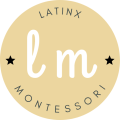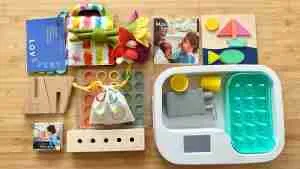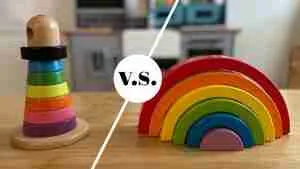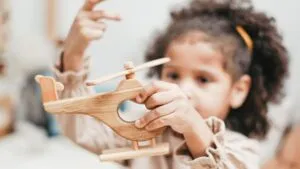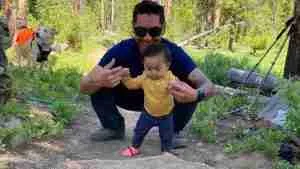
Open Ended vs Close Ended Toys EXPLAINED!
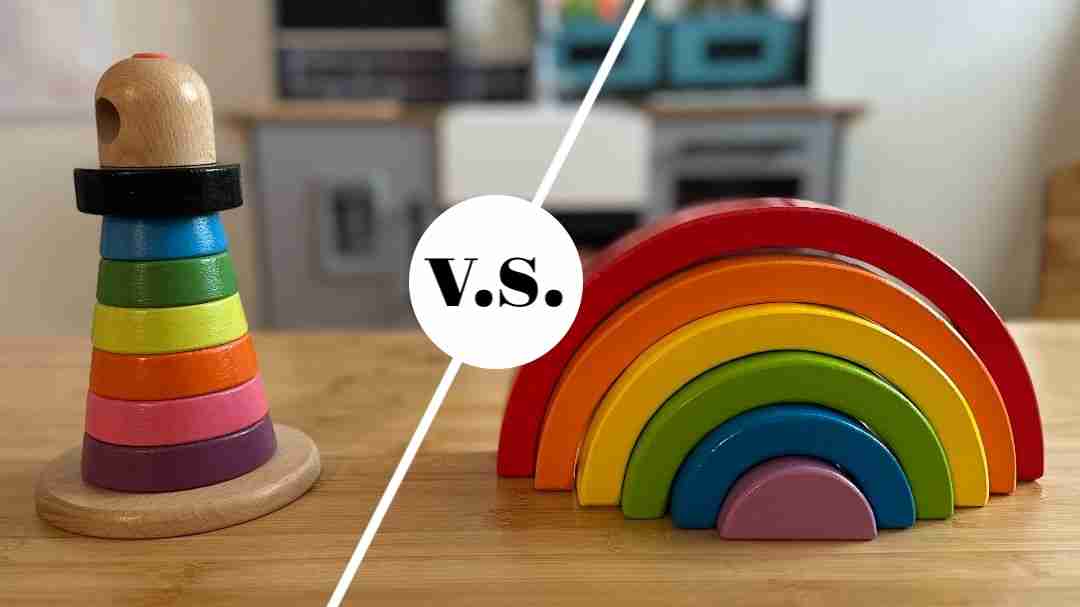
*Disclosure: I only recommend products I would use myself and all opinions expressed here are our own. This post may contain affiliate links that at no additional cost to you, I may earn a small commission. Thank you for your support!
Share this post
What’s the difference between open ended vs close ended toys?
Open-ended toys don’t have a set purpose and can be used in many different ways to encourage creativity and imagination, while close-ended toys have a clear ending point and help develop specific skills and encourage social interaction.
Both types are great toys and have their unique benefits. We have both open-ended and close-ended toys in our home so we can nurture our daughter’s overall development.
This is something I highly encourage. Your child can have a well-rounded play experience when they have both types of toys available.
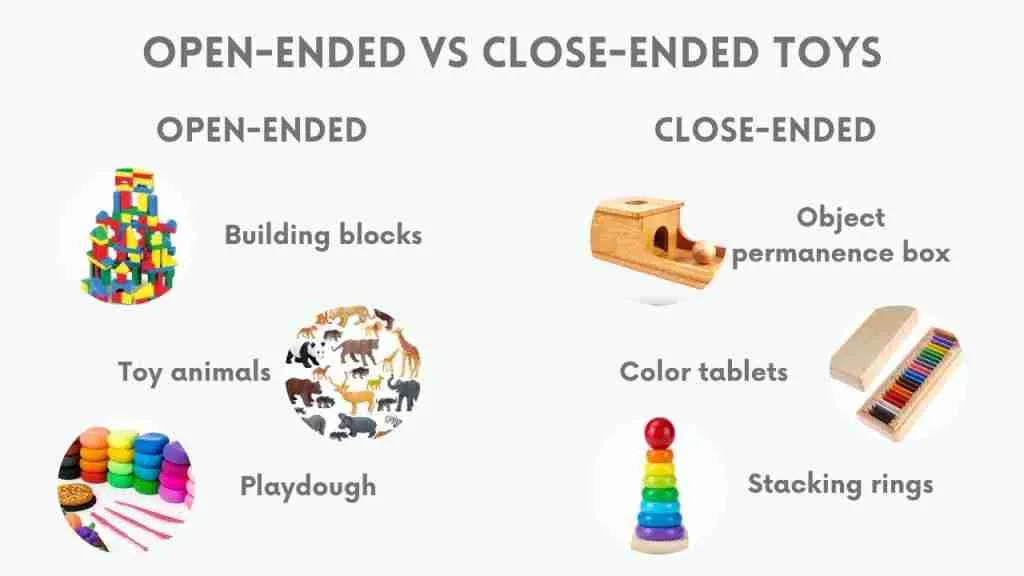
What are open-ended toys?
Open-ended toys are toys that your child can play with without set objectives or end goals.
Take building blocks for example, which are our favorite type of open ended toy. There are so many ways my daughter uses them such as to build towers or a farm for her toy animals.
These toys are very simple and invite kids to think of their own way of playing with them.
That means that there is no one correct way of playing with them, and this is one of the reasons many children enjoy open-ended toys more.
Your child will not make any mistakes because there is no way they can make one! If they don’t like what they built, they can simply change the design.
What are the benefits of open-ended toys?
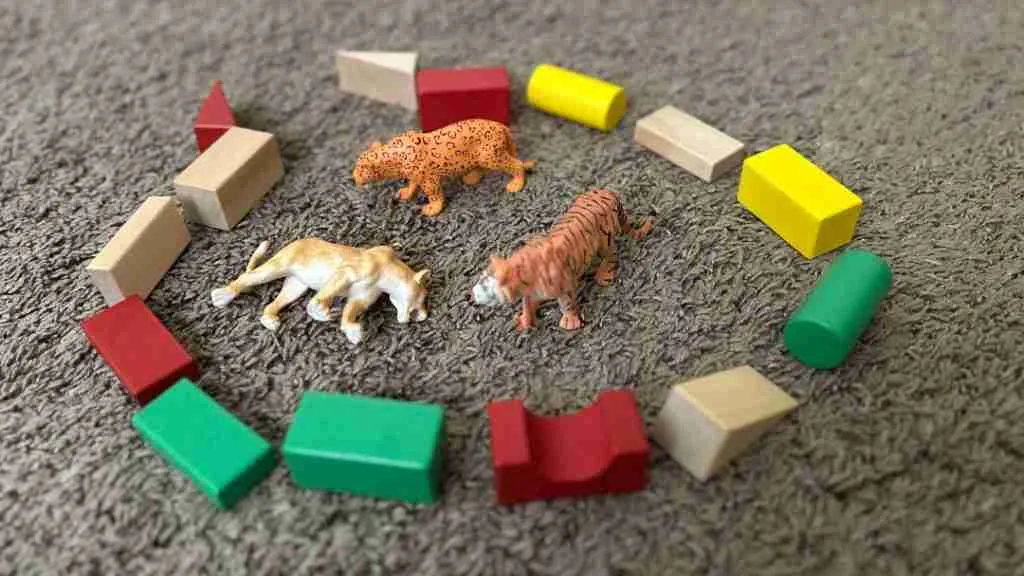
As a Montessori Guide and parent of a young toddler, I have seen how children benefit from open-ended toys. Here are just some of the major benefits:
1. There are no rules
Isn’t it fun when you can do things on your own terms?
Open-ended toys don’t boss your child around. There are no strict rules to follow or boundaries to confine their play.
This helps your child explore and experiment with different possibilities and outcomes. They can also create their own rules and games.
And when your child has the freedom to choose the way they want to play with their toys, they will become more independent and self-sufficient.
2. There is no end result
Crossing the finish lines or winning medals does not exist here. With open-ended toys, your child won’t care about the destination, only the journey.
The fun never stops because there’s no final whistle.
Since open ended toys do not have a specific goal or outcome, your child will play with them for as long as they want without feeling pressured or frustrated by the expectations of others.
3. Encourage creativity and imagination
These toys are like fuel for your child’s creative engine. They encourage them to dream, invent, and imagine things that they didn’t even know existed. The only limit is their own creativity.
We use open ended toys to stimulate our daughter’s creativity and imagination. We always encourage her to invent her own scenarios and stories with these toys.
She also uses open-ended toys to express her feelings and ideas, enhancing her communication and emotional skills.
4. Promote independent play
From building blocks, to toy animals, or even molding clay, open ended toys will promote independent play because your child does not need any guidance or assistance from adults.
Let’s take playdough or molding clay as an example.
Your child can simply walk over to their art table and get some play dough to make a house, animal figures, sculptures, robots, etc.
You don’t have to tell your child when to play or what to make with play dough. They will do it independently.
5. Introduction to engineering
Who said engineering is just for grown-ups? Open-ended toys are your first toolkit for understanding how things fit together.
These toys introduce your child to the basic concepts of engineering, such as design, construction, problem-solving, and testing.
They can use Duplos or Lego to build structures, bridges, towers, or machines and learn about the principles of physics, geometry, and mechanics.
Your child will turn into a little engineer and design their miniature world.
Examples of open-ended toys and how to use them
1. Building blocks
Wooden building blocks are our favorite open-ended toy. Yes, I know I’ve mentioned this before but honestly, I think every child should have them.
Just imagine your child being the architect of their own tiny city. They can stack the blocks, create towers, and design secret hideouts.
We like to build fences and enclosures around toy animals and this also develops her enclosure schema.
2. Playdough
Playdough is another open ended material we have at home and one that can spark your child’s creativity and imagination.
As I mentioned earlier, our daughter can mold, shape, cut, and sculpt playdough into various forms and figures, or use it to make pretend food, animals, and plants.
Another huge advantage is that playdough can help your child develop fine motor skills and dexterity because it requires them to mold it using their fingers.
3. Wooden or plastic animals
Your child’s room can become a wild safari.
These plastic animals, or wooden if you prefer a more natural Montessori environment, aren’t just figures.
Your child will learn about different types of animals, their names, sounds, and habitats.
4. Art supplies
Art supplies, such as crayons, markers, paints, paper, scissors, and glue foster your child’s artistic expression and creativity.
They can use them to draw, paint, cut, and glue various shapes, figures, and scenes. Your child can also decorate their room, make cards, or create gifts.
5. Nature objects
Sometimes you do not need mass-produced toys because the best toys can be found in nature.
Not only will your child find many ways to play with natural objects but they will also learn so much about nature and the outdoors.
What are closed-ended toys?
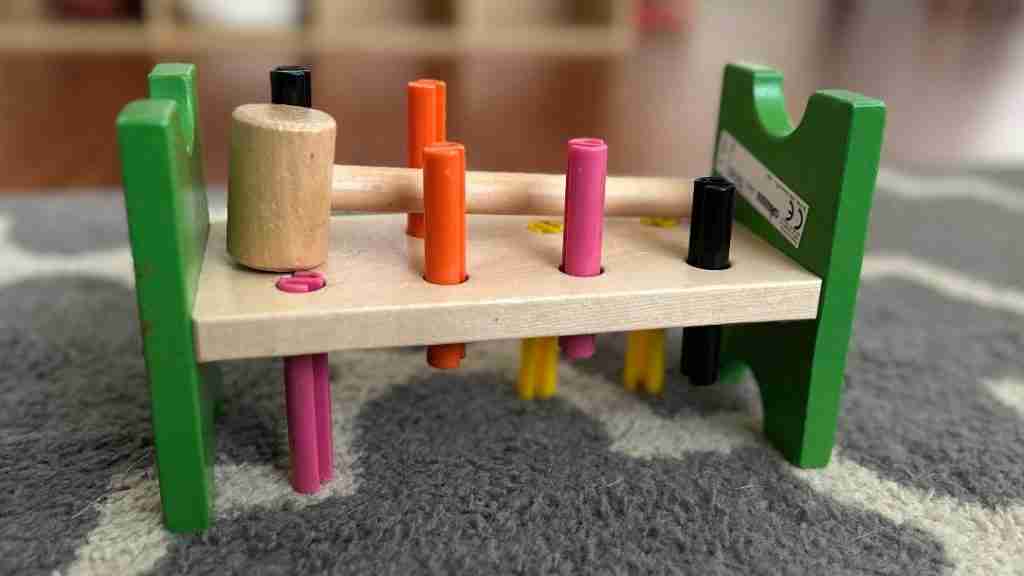
Closed-ended toys have a specific mission in mind and are designed to teach a particular skill or concept, such as matching, sorting, counting, or sequencing.
You’ll typically find that these toys often come with rules, a clear goal, and a defined way to achieve it which means that they have limited possibilities for use.
For example, the classic Montessori Pink Tower helps your child build a concept of size in three dimensions.
They learn to compare and contrast the different dimensions of the cubes, such as length, width, and height, and to recognize the patterns of increasing and decreasing sizes.
What are the benefits of close-ended toys?
I do want to mention that close ended toys should be part of your child’s Montessori toy collection because they have so many benefits.
1. Focus on a specific skill
Closed-ended toys help your child master a specific skill or concept, such as hand-eye coordination, problem-solving, or logical thinking.
For example, the object permanence box helps your child improve their fine and gross motor skills as they learn to pick up a ball and drop it into the hole of the box.
It also teaches them the concept of object permanence, they will understand that an object still exists even if they don’t see it anymore.
2. Have one purpose
Having a single goal can be a strength because there is a clear and defined goal or outcome that your child has to achieve.
Take a shape sorter, for example. The goal for this toy is to match each shape to its designated hole.
This simple activity helps your child learn about shapes, refine hand-eye coordination, and develop the ability to categorize objects based on their characteristics.
3. Concentration
Closed-ended toys require your child to pay attention and focus on the activity.
Take the example of the Pink Tower again. Your child has to focus on placing a smaller cube on top of a bigger one and balance it so they don’t fall.
And as your child focuses on aligning each cube precisely, they enhance their concentration skills.
4. Self-correction
Since close ended toys have an end goal, your child has to get things right. But if they don’t they can usually find their mistake.
For example, if your child is putting a shape puzzle together and a piece doesn’t fit, they realize there’s an error.
They can try putting the piece in another place or try a different piece. This is a good way to handle mistakes independently and is a valuable lesson in trial and error.
5. Sequencing
Closed-ended toys often involve a sequence of steps that your child has to follow to complete an activity, such as stacking rings from largest to smallest or arranging numbers from 1 to 10.
And this helps your child develop their memory, logic, and order, as they learn to follow a pattern or a rule.
Examples of close-ended toys and how to use them
Here are some closed-ended toys we’ve used:
1. Object permanence box
The object permanence box is another popular Montessori toy for infants and consists of a wooden box with a hole on top and a tray at the bottom.
Your child has to drop the ball into the hole and watch it reappear in the tray.
This simple toy teaches the concept of object permanence, which is the understanding that objects continue to exist even when they are out of sight.
2. Basic shape puzzles
These simple puzzles have a few pieces of different shapes, such as a circle, a square, and a triangle.
The goal of this toy is to fit the pieces into the corresponding holes on the board.
And as simple as it may seem, it helps your child recognize shapes and refine their fine motor skills and spatial awareness.
3. Knobbed cylinders
We have knobbed cylinders in my Montessori school. This toy comes with wooden cylinders and a base with cylindrical holes of varying sizes and depths.
The goal is to insert the matching cylinders into the holes, using the knobs to grasp them. This toy teaches size discrimination, visual perception, and hand-eye coordination.
4. Color tablets
Color tablets are another material we have in our classroom and consist of wooden tablets that have different colors on them.
Your child has to sort them by color or match them with other objects of the same color. This toy teaches color recognition, sorting, and matching skills.
5. Cleaning up
This is not a toy but a fun activity to do with your child.
Yes, cleaning up can be a closed-ended activity.
You don’t have to pick up your kids’ toys all the time. Instead, work with them and show them how to pack away their toys and organize their toy shelf.
They will learn the importance of order and soon you won’t have to do all the cleaning!
Open-ended vs close-ended toys comparison
This table summarizes the differences between open-ended and close-ended toys
Open-ended Toys | Closed-ended Toys | |
Purpose | Encourage creativity, imagination, and exploration | Designed for specific play scenarios or tasks |
Play Possibilities | Infinite possibilities and varied uses | Limited to a predefined set of activities |
Imagination | Promotes imaginative play and problem-solving | May restrict imaginative thinking and creativity |
Skills Development | Enhances critical thinking and fine motor skills | Focuses on specific skills or concepts |
Age Range | Suitable for a wide range of ages and stages | Often designed for a specific age group |
Longevity | Typically have longer-lasting appeal | May be outgrown more quickly |
Examples | Building blocks, art supplies, dolls with no set story | Puzzles, board games, action figures with predefined roles |
What to do next?
These are the differences between open ended vs close ended toys. And as you can see, one is equal to the other as far as having great developmental benefits.
Both types of toys benefit your child’s development in so many ways, and we selected the best toys to support your child’s development
Check out our ultimate Montessori toy guide where you can find toys for various ages.

Hello, I am Leslie. I am on a mission to help you support the growth and development of your child. With the right tools and proper guidance, you can navigate parenthood with confidence and assertion! My goal is to equip you with knowledge to help you construct a strong foundation for your child’s life.
Suggested articles
You May Also Like
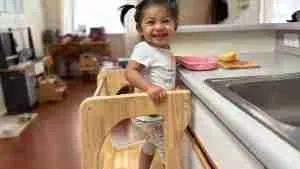
5 Best Montessori Learning Towers For Independent Kids
These are the 5 best Montessori learning towers we recommend based on quality, ease of use, storage, and educational value.
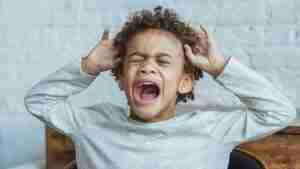
How To Handle Terrible Two Tantrums: 9 Proven Tips
How do you handle terrible two tantrums? Simple, help your child regulate their emotions, offer choices, and promote open communication.
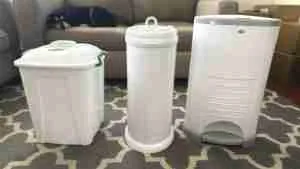
Best Diaper Pail For Cloth Diapers: 5 Options That Work
The Ubbi Diaper Pail controls odors, does not require special diaper pail bags, and has a locking mechanism that prevents children from sticking their hands inside the diaper pail.
